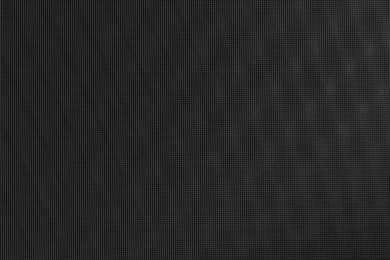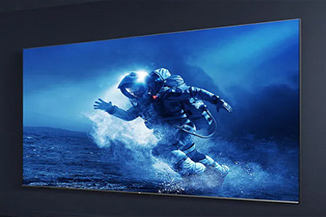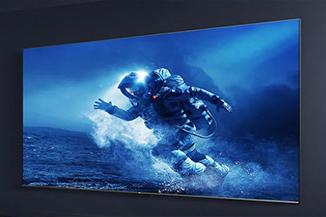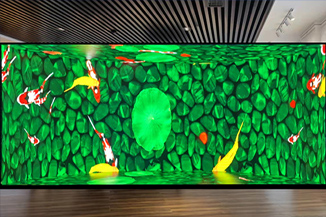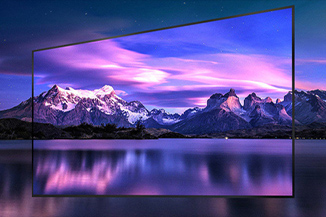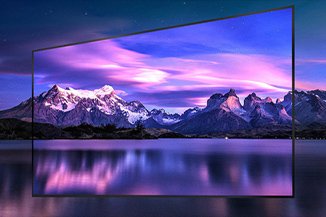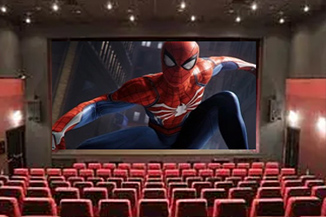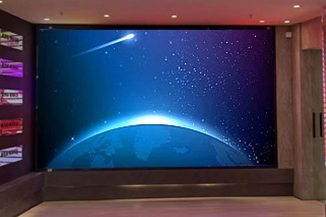Publisher: Supplier of LED Display Time: 2022-11-24 11:24 Views: 2031
Technological innovation always happens in laboratories and production lines that we cannot see, but when it appears in front of our eyes, it shines with the light of the times. The term "light of the times" is appropriate in the description of 8K technology. As we all know, video technology has been developing rapidly. The most intuitive thing is the video we watch every day. From the "slag picture quality" in the past to the "ultra high definition" today, it is witnessing the advancement of video clarity. .
What is an 8K display? The currently widely popular 4K TV resolution is 3840×2160, which is about 8 million pixels. The resolution of 8K TV reaches 7680×4320, which is about 33 million pixels, which is 4 times that of 4K TV. The color saturation, fineness and layering of the picture have been qualitatively improved. "The biggest defect of the previous flat display is the lack of layering and the depth of the picture is not strong. 8K just makes up for this deficiency. Its image effect is realistic, rich in layers, and can present a natural 3D stereoscopic effect."
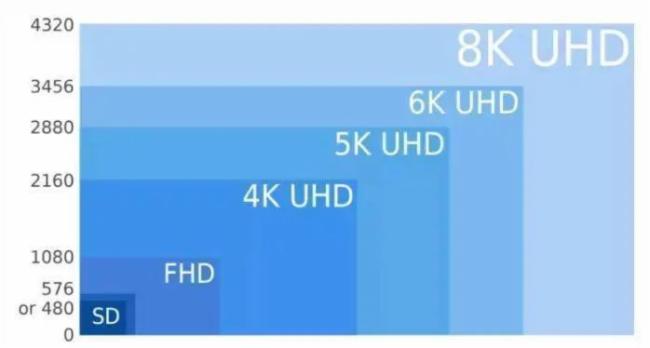
'K'
2K, 4K, 8K, etc., means "the total number of columns of video pixels", such as 4K, means that the video has 4000 columns of pixels, specifically 3840 or 4096 columns. A camera with 4K resolution usually has 3840*2160 or 4096*2160 pixels.
'P'
720P, 1080P, etc., represent the "total number of lines of video pixels", for example, 720P means that the video has 720 lines of pixels, while 1080P means that the video has a total of 1080 lines of pixels, and the number of pixels of a camera with 1080P resolution is usually 1920* 1080. "P" itself means "progressive scanning", which is the abbreviation of Progressive, as opposed to interlaced scanning (Interlaced).
8K is the same as 4K. If you're talking about a display, it has twice as many pixels both horizontally and vertically as a 4K display: 7680×4320. However, there are not many 8K video sources, and we are still far away from 8K becoming mainstream.
It is well known in the industry that 8K, also known as QUHD technology, has a resolution of up to 7680×4320, which is four times that of a 4K display in terms of display effect and 16 times that of the current mainstream high-definition (FHD) resolution. Under the standard of 1.0 vision of normal human eyes, 8K TV can give people 4.3 times the high-definition visual experience.
Compared with the 4K liquid crystal that the industry is currently promoting, 8K achieves a multiplier increase in resolution while increasing the difficulty of technology and industrial ecological construction at a "geometric level".
If the core challenge facing the 4K industry is a series of problems caused by too much data, then 8K will double this problem. Taking the transmission environment as an example, at present, a 4K standard movie after audio track compression requires about 200GB of storage space, and the network download speed for smooth online playback of 4K movies needs to reach 40m/s. The speed is only 25m/s. But an 8K resolution video requires 194GB of space even for 1 minute, and 4TB of space for 20 minutes!
The huge amount of data is still the core problem of the 4K industry. This problem has caused it to face challenges in shooting equipment, production costs, transmission pressure, video technology, mobile storage and playback equipment, thus making the lack of 4K program sources as the core The ecological bottleneck still has not been broken through.
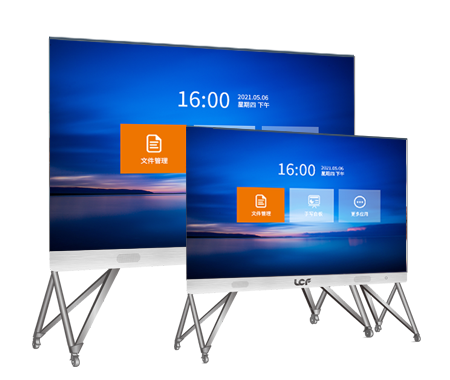
8K is only hot but not hot, what is the reason?
In the first half of 2020, the performance of the 8K TV domestic market is almost four times that of the same period in 2019. However, the absolute number is only 15,000 units—but 8K, which must appear at exhibitions and press conferences, is actually a "laboratory pet" and is far from becoming a real market concept.
In this regard, industry insiders use this sentence to describe 8K: the high price of high prices, the higher end of large screens, and the luxury of luxury! Indeed, the current sales of large-screen TVs of 65 inches and above are still "a minority in the market"; and 8K is "very few of these few". Even new categories such as laser TVs and OLED TVs still "lack sufficient 8K" layouts.
On the other hand, 8K products are indeed expensive. Even the cheap 8K products launched by Changhong and others are more than two or three times the price of 4K TVs of the same size. Moreover, the effect of these cheap 8K TVs represented by 55 inches is not ideal-the screen is too small to reflect the clarity advantages of high resolution.
Of course, another factor hindering the choice of 8K TV is the "old-fashioned" content problem: the lack of 8K content in the market. Although, many 8K TVs claim to be able to convert 4K content into 8K, and even convert 2K content into 8K quality: but, first, the difference between the 8K processed by this technology and the original 8K quality is bound to be huge; The 8K content processed by the same technology, the real-time conversion effect of the TV is obviously worse than the "technical conversion" 8K effect generated by using professional programs and equipment that takes dozens of hours.
Therefore, the technical conversion of 8K image quality, especially the real-time conversion technology of TVs, is only a supplement to 8K content that is "better than nothing". This cannot really solve the problem of lack of 8K content.
To sum up, the real implementation of 8K TV "has a lot of problems." Even the basic technology carrier is still "hugely controversial"!
In the 8K era, can LCD or OLED not work?
At present, 8K TVs sold in the market are mainly based on liquid crystal display technology. However, from the perspective of productization, the same-size LCD panel will change from 4K to 8K standard, and the effective area will be reduced by 40% in terms of aperture ratio performance-the pixel structure of liquid crystal display is essentially a frame filled with liquid crystal material. Under the current materials and box-making process, the thickness of this frame can hardly be further reduced for large-size panels. This determines that the area of the liquid crystal material that can be used for light transmission on the screen decreases a lot after the pixel density increases.
The available light transmission area is reduced by 40%, which means that the backlight power is increased by 60%. Therefore, the new version of the TV energy efficiency standard prepares "a version" especially for 8K TVs.
A similar principle structure is also suitable for OLED TV products. OLED panels are made by evaporation process or inkjet printing process. The two factors of large size and high density will significantly increase product cost, reduce yield, and reduce the luminous capacity of a unit panel. This also makes the current high-end OLED TVs not all adopt the 8K standard. In fact, the main sales of OLED TVs are still 4K products.
In addition to LCD and OLED TVs, laser TVs are another 8K option. Theoretically, the large size advantage of laser TV is also the best match for 8K applications. Because only large-size screens can truly take advantage of the definition advantages of 8K high resolution. However, 8K laser TV is still far away: because of laser display based on projection technology, light valve products will also have technical difficulties or price increases as the resolution increases.
Therefore, it is still unknown which display technology will realize the beautiful vision of 8K TV. The situation in which multiple technologies are competing, from a good point of view is "a hundred flowers bloom", and from a bad point of view, it means "lack of a display technology that really has a huge advantage in 8K."
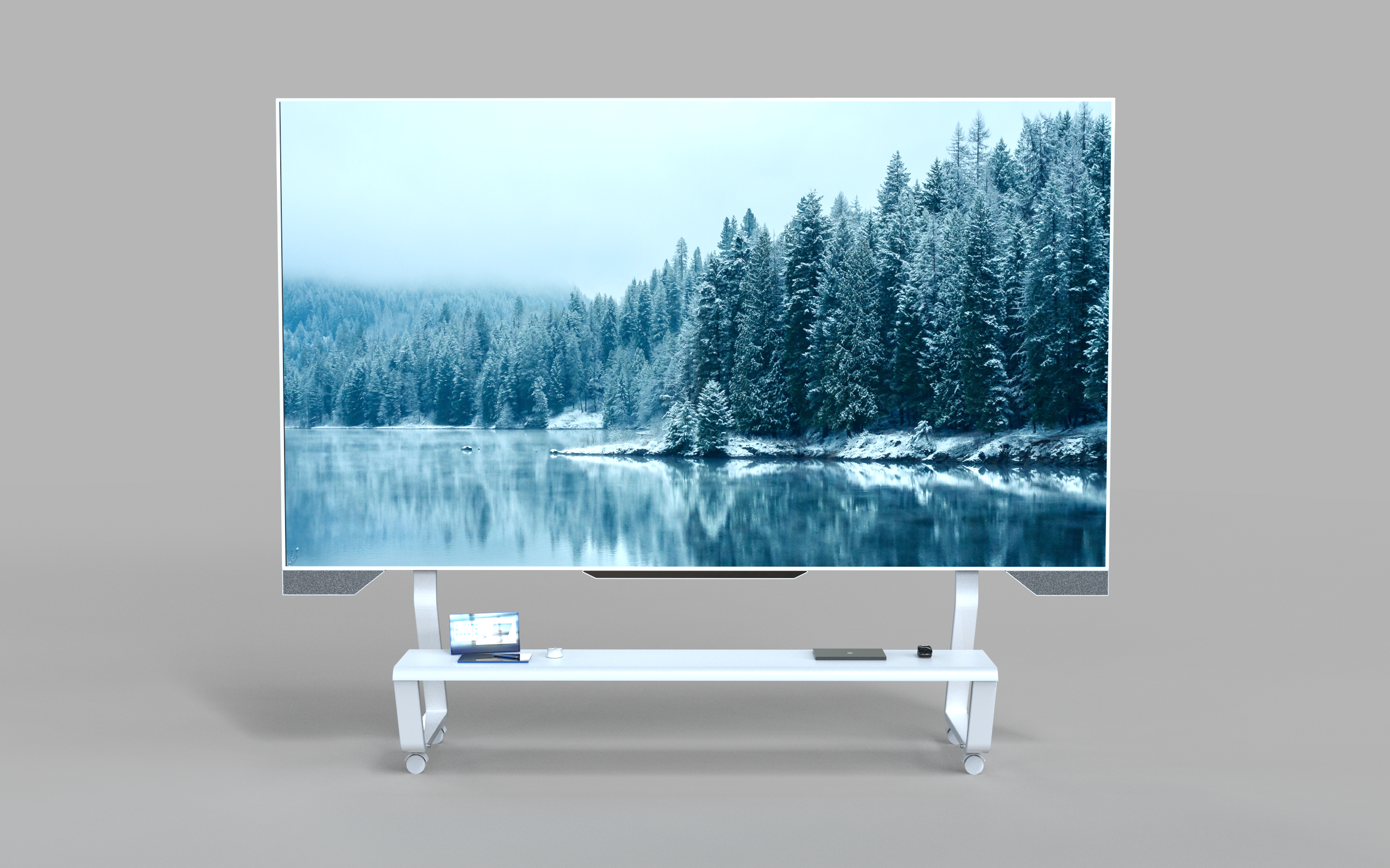
There is still a "gap" between 8K products and 8K effects
Can you get the shocking effect of 8K display after buying an 8K TV? Many consumers will think "it must be". However, the reality is quite the opposite.
First of all, the shocking effect of 8K must rely on a "bigger screen". At a certain distance, the resolution ability of the human eye is limited. For example, the 2.5-3.5-meter "living room sofa-television" distance for regular TV viewing, for 40/50-inch 8K, has exceeded the limit resolution of the human eye. It is precisely because of this principle that 32-inch TVs do not even have the motivation to achieve 2K popularization.
Only when the two requirements of "not too far away and a large enough screen image" are met at the same time can 8K present an ideal shocking image. Generally speaking, however, the viewing distance is directly proportional to the screen size. If the viewing distance is required not to be too far, it is equivalent to achieving "lower screen output brightness" without damaging effects such as color and contrast-this is a relatively contradictory "technical indicator" option.
Secondly, 8K appreciation, whether it is a larger viewing distance or a larger screen, also means that consumers need a larger house; at the same time, the higher price of 8K content and higher display product prices also means an increase in "cost"—— That is to say, 8K is a "high consumption" product no matter how you look at it. This will inevitably become an obstacle for many consumers to "enter 8K".
In fact, at present, many large household screens, including projectors and LCD TVs, still watch 2K content, and even the products themselves are 2K products-consumers' tolerance for clarity, when the resolution is closer to the limit. will be higher. 2K home theater products still occupy the mainstream 100+ inch giant screen market, which is the embodiment of this rule. Perhaps it is because of all kinds of "difficulties" that the next generation of broadcasting and television exceeds the high-definition standard, which itself includes two levels of popularization of 4K and high-end 8K to meet the needs of different groups of people.
"The market is optimistic about the value of 8K technology. But this does not mean that the market believes that 8K will be popularized in households soon. 8K can be a special application for engineering and commercial display, it can be a luxury in home TV, or it can be rented and shared. Sexual application market!" Industry experts pointed out that the 8K display era will not be a comprehensive replacement of the previous high-definition era, but more likely will be a differentiated structural market and a technical standard for on-demand equipment.
The speed of technological updates and iterations is beyond imagination. The discussion about 4K is still in my ears, and various 8K products and applications have appeared one after another: 8K TV, 8K camera, 8K live broadcast... 8K has become a hot word that everyone knows. Various questions also come along with the hotness of 8K: What is 8K? Compared with 4K, how is 8K better? With questions, let’s walk into the mysterious world of 8K. What a different experience.
First of all, we have to make it clear that whether it is 4K or 8K, it refers to the resolution. 8K resolution means that the horizontal resolution of the image reaches or approaches 8000 pixels. The current highest standard comes from the 8K UHD defined in the current UHDTV ultra-high-definition television standard ITU-R BT.2020, that is, the resolution is 7680x4320.
The resolution we are talking about now is the display resolution (screen resolution). As a subdivision of resolution in a broad sense, display resolution (screen resolution) refers to how many pixels the display can display. The more pixels that can be displayed, the finer the picture. In the same screen area, The more information can be displayed, so the resolution is a very important performance indicator.
Previously, the 8K Association, represented by Samsung, formulated performance specification standards for consumer 8K TVs. In addition to resolution, the standards also covered input frame rate, display brightness, Codec and other characteristics. details as follows:
Resolution: 7680 x 4320 pixels
Input frame rate: 24p, 30p and 60p frames per second
Display brightness: peak brightness exceeds 600 nits
Codec: HEVC
Interface: HDMI 2.1
After looking at the standard, we can see that 8K is not as simple as we think. It is not just a TV that supports 8K resolution and 8K film sources. It has more stringent technology for hardware facilities such as display devices and transmission lines. Require. Among them, the HDMI 2.1 standard that can support 8K and dynamic HDR can be said to be the door to the 8K world.
Source: Smart Audiovisual
